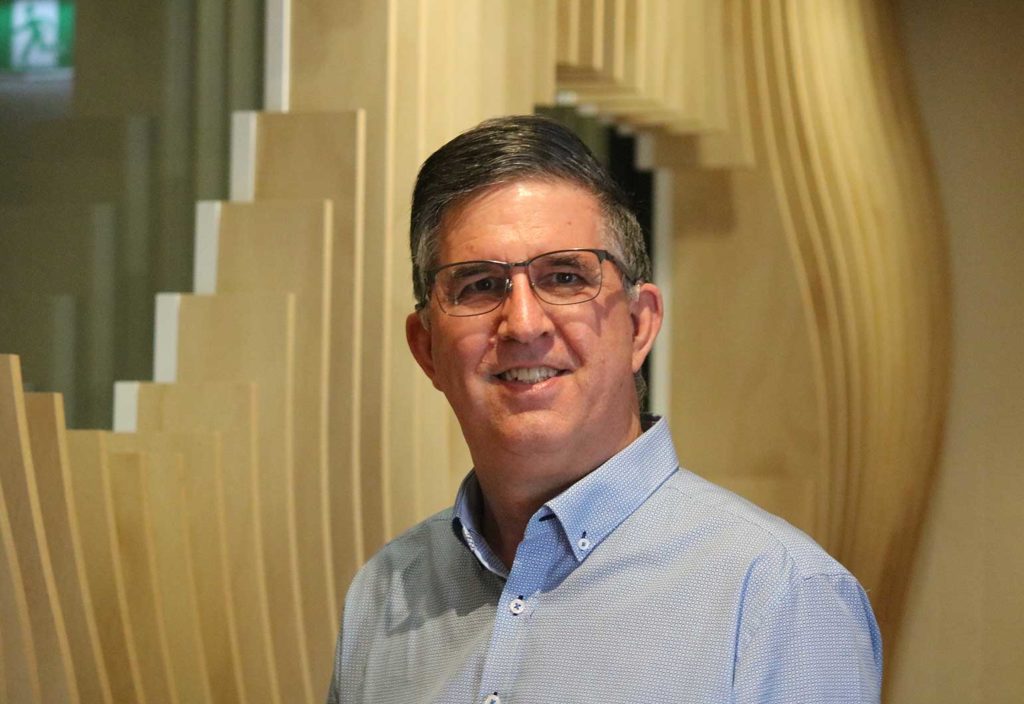When Dr Greg Watkins developed profound deafness following a 30-year career as an electrical engineer, he turned his skills to improving the performance of cochlear implants.
Watkins is the author of a new paper analysing the accuracy of predictions for cochlear implant outcomes to improve their performance in challenging environments.
He told create that moving into biomedical engineering had been very rewarding.
“A few years ago, I wondered if my experience of hearing loss and my technical experience might help move some of the challenges for hearing impaired people forward,” he said.
“My return to uni in 2014 was prompted by a deterioration in my hearing, something a number of my family members also experienced.”
After graduating from high school, Watkins studied electrical engineering at the University of New South Wales. He went on to undertake a cadetship in the telecommunications industry, which led to him developing telecommunications equipment at an exciting time for the field.
In 2014, he returned to his alma mater, enrolling in a PhD in biomedical engineering under the supervision of Professor Gregg Suaning, who is interested in implantable bionics for eyes and ears, and Dr Brett Swanson, who works for implant firm Cochlear Limited.
“By the time I completed my PhD, I’d received two cochlear implants — that meant my hearing had deteriorated to the point where I was profoundly deaf bilaterally,” Watkins said.
“I was then in the fascinating situation of understanding the theory, but also understanding the reality of how they actually work and what’s needed to get the full benefit out of cochlear implants.”
A new way
A cochlear implant turns sounds into electrical signals using two parts: an external sound processor behind the ear, and an implant under the skin that attaches to an electrode array in the cochlear.
The processor converts sounds into nerve stimulation patterns, which are transferred through the skin into the implanted receiver.

A range of factors determine how well a cochlear implant works for an individual, some of which are well understood, some less so. As Watkins was going through rehabilitation to learn to hear again, he began to look into a key problem for fellow cochlear implant recipients: that the outcomes vary significantly from recipient to recipient.
“[The factors] include cognitive function, placement of electrodes, the anatomy, but also the sound processing and how we convert sound to electrical nerve stimulation,” he said.
“The motivation for my paper was to look for a way to evaluate new ideas without having to line up volunteers to test sounds — playing them sentences and getting participants to repeat them, noting how accurate it was making some adjustments.”
Watkins’ paper, published in Ear and Hearing, presents a new way of predicting speech perception for individual recipients. It provides a methodology that could make patient trials more efficient, potentially leading to implants that are personalised to an individual’s listening capability.
“As far as we’ve been able to ascertain, this is the first publication that has been able to put forward a method that predicts performance for individuals in different conditions,” he said.
“Instead of working with averages, we have the opportunity to see that one processing approach works best for one individual, but a different approach works better for another individual. There’s very little work been done in that area so far.”
Watkins hopes that researchers will better be able to predict how well cochlear recipients hear, which means more ideas have the potential to be evaluated.
While he doubts that this will ever deliver one clear way, it will help researchers to narrow down a few different methods to focus on.
The future is loud and clear
When it comes to his next project, Watkins is looking to continue to refine his idea and extend it into new areas.
“I’m interested in vision processing for the bionic eye, and interested to see if the ideas that have worked well for ears might also work well for eyes,” he said.
He said he remains amazed that he can have a conversation over the phone when he can’t hear anything without his implants.
“Engineering has been a wonderful and interesting career,” he said.
“As an engineer we think about maths and science to solve problems, and as biomedical engineers we solve problems that really affect people’s lives.”
